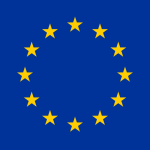23 Oct Three Lines of Defence in AML: A Guide for Corporate Compliance
Anti-Money Laundering (AML) efforts are a vital component of any corporate compliance framework. With increasing regulatory scrutiny and the ever-evolving sophistication of financial crimes, businesses need robust mechanisms to detect, prevent, and mitigate money laundering risks. One of the key frameworks employed to bolster AML practices is the “Three Lines of Defence” model, which is widely recognised for enhancing risk management and control.
In this article, we will explore the Three Lines of Defence in AML and their significance in maintaining a resilient AML compliance program. We will also discuss how KYC Lookup, a UK-based fully accredited AML training provider, equips corporate clients with the necessary knowledge and skills to effectively implement this model.
What is the Three Lines of Defence Model?
The Three Lines of Defence (3LOD) is a risk management framework designed to create clear divisions of responsibility within an organisation. It provides structure and clarity on who is responsible for managing risks and how they are controlled and monitored. The framework has been widely adopted in the financial sector, especially for compliance, internal controls, and risk management in AML programs.
The Three Lines of Defence:
- First Line of Defence: Operational Management
The first line consists of front-line business functions. Employees who are directly involved in day-to-day operations play a critical role in identifying, managing, and mitigating AML risks. They are the organisation’s first point of contact with external parties and are thus responsible for complying with AML policies and procedures.
- Second Line of Defence: Risk Management and Compliance
The second line is primarily composed of compliance officers and risk management teams. Their role is to design, implement, and monitor controls to ensure that the business units comply with regulatory requirements and manage their AML risks effectively. They serve as an oversight body, ensuring that the first line adheres to AML laws and internal policies.
- Third Line of Defence: Internal Audit
The third line of defence is internal audit, an independent function that assesses the effectiveness of the first and second lines. This team provides objective assurance that the organisation’s AML controls are adequate, effective, and being followed. Internal auditors perform regular evaluations and suggest improvements to strengthen the overall risk management strategy.
The Importance of the Three Lines of Defence in AML Compliance
The 3LOD model is essential in AML compliance for several reasons. It not only creates accountability across different organisational layers but also ensures that AML risks are managed proactively rather than reactively. Here’s how the Three Lines of Defence model contributes to AML efforts:
- Improved Risk Detection
The first line—operational management—deals with customers and transactions daily. This makes them well-positioned to identify unusual or suspicious activity. By integrating AML policies at the operational level, businesses can catch red flags early and mitigate risks before they escalate.
- Stronger Oversight and Control
The second line—compliance and risk management—ensures that the business complies with local and international AML laws. This line ensures that effective internal controls are in place and that employees are trained on recognising suspicious behaviours. By performing regular risk assessments, this line provides continuous oversight and improvement in AML processes.
- Independent Assurance and Continuous Improvement
The third line—internal audit—serves as an independent reviewer of the organisation’s AML framework. By regularly auditing the risk management and compliance systems, the internal audit team helps identify weaknesses or gaps, providing recommendations to strengthen the organisation’s AML efforts.
How KYC Lookup Supports Corporate Clients with AML Training
When implementing the Three Lines of Defence model, it is crucial for companies to ensure that their staff is adequately trained. At KYC Lookup, a UK-based fully accredited AML training provider, corporate clients can access specialised AML training programs tailored to their needs.
Customised Training Programs: KYC Lookup offers a range of AML training solutions, including online courses, video tutorials, and in-person workshops. Their programs are designed to equip employees across all three lines of defence with the knowledge and tools necessary to identify and mitigate money laundering risks. The courses cover key areas such as:
- AML legislation and regulations
- Recognising suspicious activity
- Implementing effective controls
- Reporting suspicious transactions
Accredited and Industry-Relevant Courses: KYC Lookup’s AML courses are fully accredited, ensuring that participants receive industry-recognised certification upon completion. This helps businesses demonstrate their commitment to compliance and regulatory standards. By offering region-specific courses for markets like Algeria, Egypt, Tunisia, Nigeria, and South Africa, KYC Lookup ensures that the training is relevant to the local regulatory environment.
Continuous Learning and Updates: As financial crime evolves, so do AML regulations and best practices. KYC Lookup provides continuous learning opportunities for its clients by updating course materials and offering refresher courses. This keeps corporate compliance teams up to date with the latest AML requirements and ensures the effectiveness of their Three Lines of Defence strategy.
The Role of Technology in Enhancing the Three Lines of Defence
Incorporating technology into the Three Lines of Defence model significantly improves its effectiveness. For instance, businesses can use automated systems for transaction monitoring and suspicious activity reporting, reducing the burden on first-line employees. KYC Lookup also offers guidance on implementing technological tools that streamline AML compliance processes, making them more efficient and reducing the risk of human error.
Leveraging Data Analytics: Data analytics plays a crucial role in modern AML programs. By analysing customer behaviour and transaction patterns, businesses can quickly identify unusual activities that may indicate money laundering. Compliance officers in the second line can then use these insights to make informed decisions and adjust controls as needed.
Advanced Audit Techniques: Internal audit teams can also benefit from technological advancements. Automated audit tools allow auditors to perform comprehensive checks of the entire AML framework quickly, ensuring that no gaps are overlooked. This enables the third line of defence to deliver more effective and timely assessments, helping businesses stay compliant with AML regulations.
Strengthening AML Compliance with the Three Lines of Defence
In conclusion, the Three Lines of Defence model is an essential framework for managing AML risks in any organisation. By clearly defining roles and responsibilities, it ensures that AML efforts are integrated at every level, from operational staff to senior management. This holistic approach not only improves risk detection but also enhances the overall effectiveness of an organisation’s AML program.
KYC Lookup, as a leading UK-based fully accredited AML training provider, supports businesses in building a strong Three Lines of Defence framework. Their comprehensive training programs ensure that employees are well-equipped to manage AML risks, comply with regulatory requirements, and contribute to a robust compliance culture.




No Comments